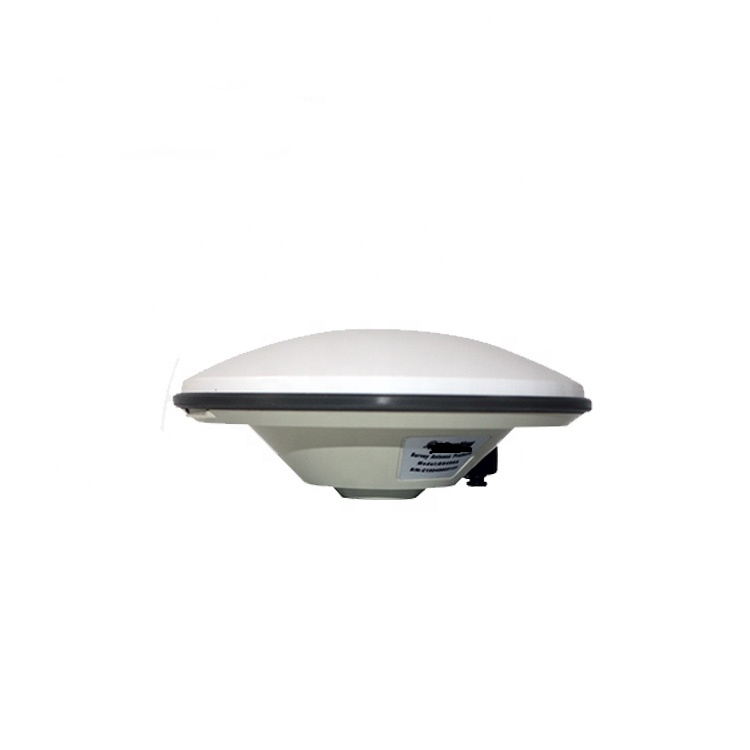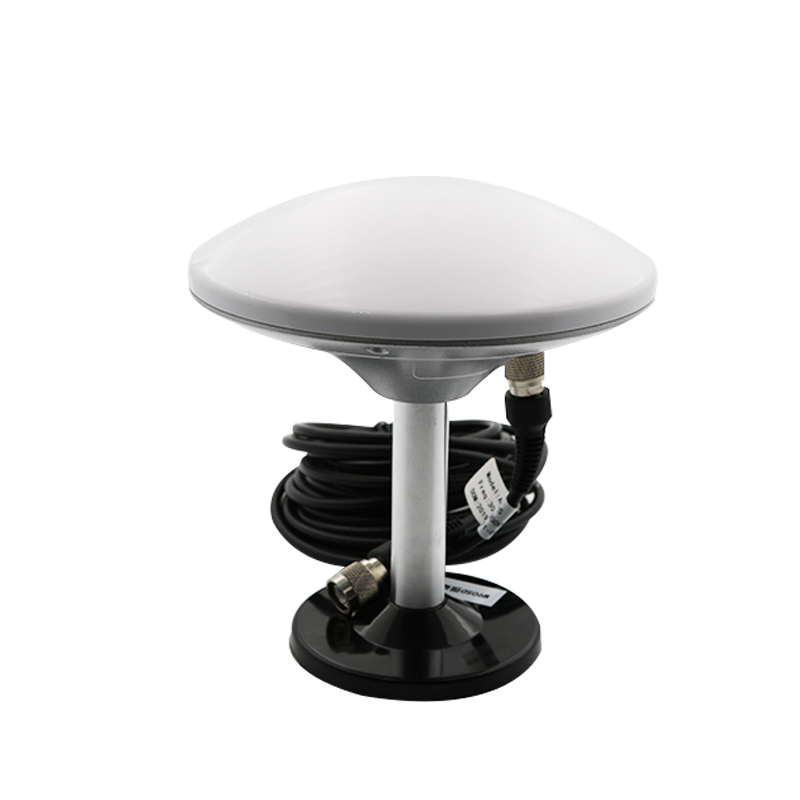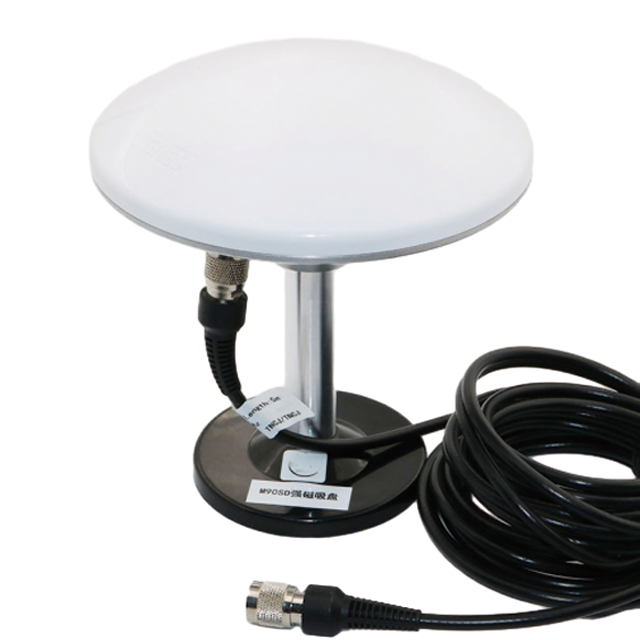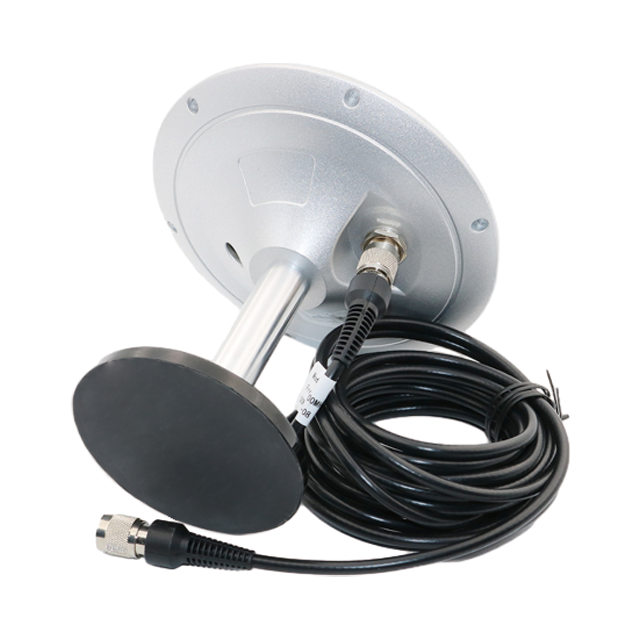connectivity of this GNSS marine antenna
The passive connectivity of this GNSS marine antenna is a deliberate design choice that offers distinct advantages in marine environments. Unlike active antennas, which incorporate amplifiers and require power, passive antennas rely solely on their physical structure to capture and transmit signals. This eliminates the need for onboard power supplies or complex wiring, reducing points of failure in the harsh marine environment where water exposure and vibration can compromise electrical components. For small vessels, such as fishing boats or recreational yachts with limited electrical systems, passive antennas simplify installation and maintenance, as there is no risk of amplifier failure or power supply issues. In larger ships, passive antennas can be integrated into redundant positioning systems, providing a reliable backup in case active systems encounter electrical problems. While passive antennas lack the signal amplification of active models, their design—optimized for marine use—ensures sufficient sensitivity to capture satellite signals even in challenging conditions, such as rough seas where the antenna may be tilted or partially obscured by waves.
At the core of the antenna’s performance is its ceramic patch design, a material choice that balances efficiency, durability, and compactness. Ceramic is prized for its high dielectric constant (typically between 20 and 40), which allows the radiating element to be miniaturized while maintaining resonance at GNSS frequencies. This is particularly valuable for marine applications, where space on a vessel’s deck or mast is often limited by other equipment such as radar, communication antennas, or navigation lights. The 35mm x 35mm x 6.12mm dimensions of the ceramic patch make it ideal for mounting in tight spaces, such as on the dashboard of a small boat or the radar arch of a larger vessel. Beyond miniaturization, ceramic offers excellent resistance to saltwater corrosion and temperature extremes, outperforming metal-based radiating elements that can degrade over time in marine environments. The patch is printed on a ceramic substrate with precision, ensuring consistent performance across its frequency range and minimizing signal loss due to material imperfections. This stability is critical for maintaining positioning accuracy, as even minor variations in the radiating element can introduce phase errors that disrupt GNSS measurements.
Right-Hand Circular Polarization
Right-Hand Circular Polarization (RHCP) is a key feature that enhances the antenna’s ability to receive satellite signals in the dynamic marine environment. GNSS satellites transmit signals with left-hand circular polarization (LHCP), but these signals undergo polarization rotation as they pass through the ionosphere, making RHCP the optimal choice for ground-based reception. This polarization matching ensures maximum signal absorption, even when the antenna is tilted due to the vessel’s pitch and roll in rough seas. A vessel navigating through waves can experience significant tilting—up to 30 degrees or more in severe conditions—and linear polarization would suffer dramatic signal loss (up to 20 dB) under such circumstances. RHCP mitigates this issue, maintaining signal strength and ensuring continuous positioning data. Additionally, RHCP provides inherent rejection of multipath interference, a common problem in marine environments where signals reflect off the water’s surface. Reflected signals typically have reversed polarization, allowing the antenna to attenuate them by 20–30 dB, significantly reducing positioning errors. This is particularly valuable near shorelines, where reflections from cliffs, piers, or other structures can further complicate signal reception.
The frequency coverage of the antenna—encompassing GPS L1/L2, GLONASS G1, and BeiDou B1—ensures robust positioning across global and regional satellite constellations, a critical capability for vessels operating in international waters. GPS L1 (1575.42 MHz) is the primary civilian band, providing widespread coverage, while L2 (1227.60 MHz) enables ionospheric delay correction, improving accuracy in regions with high ionospheric activity, such as near the equator or polar regions. GLONASS G1 (1602 MHz) adds redundancy, ensuring positioning availability even if GPS signals are temporarily disrupted, a scenario that can occur due to atmospheric anomalies or intentional jamming. BeiDou B1 (1561.098 MHz) is particularly valuable for vessels operating in the Asia-Pacific region, where China’s BeiDou constellation provides enhanced coverage. By supporting multiple constellations and frequencies, the antenna reduces the risk of positioning failure, a critical safety consideration for vessels far from shore where visual navigation cues are limited. The ability to switch between constellations dynamically also improves dilution of precision (DOP), a metric that quantifies the geometric strength of the satellite configuration, ensuring more reliable positioning in challenging environments such as narrow straits or near tall ships that can block satellite signals.
A gain of 3.19 dBic at zenith (directly overhead) balances signal strength with coverage, making the antenna suitable for a range of marine applications. While this gain is lower than that of high-performance active antennas, it is optimized for the passive design, ensuring efficient signal capture without the need for amplification. The gain pattern is broad enough to track satellites from low elevations (as low as 5–10 degrees above the horizon), a critical capability for vessels navigating near cliffs, bridges, or other structures that block high-elevation satellites. In coastal areas, where mountains or buildings may obscure overhead satellites, the ability to track low-elevation signals ensures continuous positioning. The gain is distributed evenly across the antenna’s radiation pattern, avoiding the narrow beamwidth that can plague high-gain antennas and cause signal loss when the vessel tilts. This balance of gain and beamwidth ensures that the antenna performs reliably in both open ocean and coastal environments, providing consistent positioning data regardless of the vessel’s location.
VSWR (Voltage Standing Wave Ratio) of ≤2.0 and 50Ω impedance ensure efficient signal transfer from the antenna to the vessel’s GNSS receiver, minimizing power loss and maximizing sensitivity. VSWR measures the ratio of reflected to transmitted signal power, with a value of ≤2.0 indicating that over 90% of the signal is transmitted to the receiver. This efficiency is achieved through careful design of the antenna’s feed network, which matches the 50Ω impedance of standard marine GNSS receivers and coaxial cables. Poor impedance matching would create standing waves, wasting signal power and generating noise that degrades positioning accuracy. The feed network is integrated into the antenna’s PCB, with components selected for marine durability, ensuring that impedance remains stable even as temperatures and humidity fluctuate. This stability is particularly important in passive antennas, which lack the amplification to compensate for signal loss, making efficient power transfer critical for maintaining sensitivity to weak satellite signals.
The lightweight design (20g) of the antenna simplifies installation and reduces stress on mounting hardware, a valuable feature for marine applications where weight and space are at a premium. Small boats and personal watercraft have limited payload capacity, and heavy antennas can affect balance or require reinforced mounting structures. The 20g weight allows for flexible mounting options, including adhesive pads, magnetic mounts, or small screws, without compromising the vessel’s integrity. For larger vessels, the lightweight design enables installation on delicate structures such as radar arches or fiberglass hulls, where heavy equipment could cause cracking or deformation over time. Beyond installation, the low weight reduces vibration-induced stress on the antenna itself, minimizing wear and tear during rough seas. Vibration is a constant challenge in marine environments, with engines, waves, and wind creating continuous motion, and a lightweight antenna is less prone to mechanical fatigue than heavier alternatives, ensuring longer service life.
Environmental robustness
Environmental robustness is a defining characteristic of the antenna, with specifications tailored to withstand the harsh marine environment. The operating and storage temperature range of -40°C to +85°C ensures performance in extreme climates, from Arctic expeditions to tropical voyages. In freezing conditions, the ceramic patch and housing materials resist cracking, while in high temperatures, the antenna avoids thermal expansion that could alter its resonant frequency. The antenna’s housing—typically made from UV-resistant ABS or polycarbonate—provides protection against saltwater spray, rain, and humidity, with an IP rating of at least IP67 to ensure water resistance. This protection is critical, as saltwater intrusion can degrade the PCB and other components, leading to signal loss or complete failure. Additionally, the antenna is designed to withstand vibration up to 2000 Hz, matching the vibration profiles of marine engines and ensuring stability during long journeys. These environmental features combine to make the antenna a reliable choice for long-term marine deployment, reducing maintenance requirements and ensuring consistent performance.
In commercial shipping and logistics, the GNSS marine antenna plays a vital role in route optimization, collision avoidance, and regulatory compliance. Large cargo vessels rely on precise positioning to navigate narrow shipping lanes, avoid shallow waters, and adhere to scheduled arrival times. The antenna’s multi-constellation support ensures positioning accuracy even in remote ocean areas, where satellite visibility may be limited. For example, a container ship traveling from Shanghai to Rotterdam uses the antenna to maintain a precise course, adjusting for currents and weather while staying within designated shipping lanes. The passive design reduces the risk of system failure, ensuring that positioning data is available for collision avoidance systems that rely on real-time vessel tracking. Additionally, international regulations such as the International Maritime Organization’s (IMO) e-Navigation initiative require vessels to maintain accurate positioning for reporting and safety purposes, making reliable antennas like this essential for compliance.
Recreational boating and fishing benefit from the antenna’s compact size and ease of installation, enabling safe navigation in coastal waters and inland waterways. Small boat owners often lack the technical expertise for complex antenna setups, and the passive design simplifies installation—no power connections or calibration required. The antenna’s RHCP ensures reliable positioning even in choppy conditions, helping boaters avoid reefs, sandbars, or other hazards. Fishermen use the antenna to mark productive fishing spots with precision, returning to the same location day after day using GNSS coordinates. In tournament fishing, where every minute counts, the antenna’s accuracy can make the difference between finding a winning catch and wasting time in unproductive areas. The lightweight design is also valued by sailors, who prioritize reducing wind resistance and weight on their vessels to improve performance.
Search and rescue (SAR) operations depend on the antenna’s reliability to locate distressed vessels and coordinate rescue efforts. SAR vessels and aircraft use precise positioning to navigate to target coordinates, and the antenna’s multi-constellation support ensures accuracy even in remote areas with limited satellite coverage. In emergency situations, where time is critical, the antenna’s passive design eliminates the risk of power failure, ensuring that positioning data is available when needed most. For example, a coast guard vessel responding to a distress call in a storm relies on the antenna to maintain its course, even as high winds and waves cause significant tilting. The antenna’s ability to reject multipath interference is also valuable in SAR scenarios, where accuracy within a few meters can mean the difference between locating a stranded boater and missing them in rough seas.
Offshore oil and gas operations leverage the antenna’s durability and accuracy for positioning drilling rigs, supply vessels, and subsea equipment. These operations occur in some of the harshest marine environments, with saltwater spray, extreme temperatures, and constant vibration from machinery. The ceramic patch’s resistance to corrosion ensures long-term performance, reducing maintenance costs for equipment that is difficult to access. The antenna’s ability to track multiple satellite constellations is critical for maintaining positioning accuracy over long periods, as drilling rigs may remain in a single location for months or years. Supply vessels delivering equipment and personnel to offshore rigs use the antenna to navigate safely, avoiding collisions with the rig or other vessels. Additionally, the antenna supports precision positioning for subsea surveying, enabling accurate mapping of the seafloor and placement of equipment such as pipelines or wellheads.
Despite its strengths, the passive design of the antenna presents certain limitations that users must consider. The 3.19 dBic gain is sufficient for most marine applications but may struggle in areas with weak satellite signals, such as in deep canyons or during solar flares that disrupt GNSS signals. In such cases, active antennas with built-in amplifiers may be required to boost signal strength. The lack of integrated filtering means that the antenna is more susceptible to interference from other marine electronics, such as radar systems or VHF radios operating in adjacent frequency bands. To mitigate this, users should install the antenna as far as possible from sources of interference and use shielded coaxial cables to reduce noise. Additionally, the small size of the antenna, while beneficial for installation, results in a narrower beamwidth compared to larger marine antennas, requiring more precise alignment to track low-elevation satellites in coastal areas with tall obstacles.
Future developments in GNSS marine antennas
-
Future developments in GNSS marine antennas may address these limitations through advancements in material science and design. Ceramic substrates with higher dielectric constants could enable even smaller antennas with improved gain, while integrated passive filters could reduce interference without adding complexity. The integration of multiple ceramic patches in a phased array configuration could enhance beamwidth and gain, improving performance in challenging environments. As satellite constellations continue to expand—with new systems like SpaceX’s Starlink and China’s BeiDou-3 adding more satellites—marine antennas will benefit from increased signal redundancy, further improving reliability and accuracy.
In conclusion
-
In conclusion, the GNSS marine antenna, with its passive design, ceramic patch construction, RHCP polarization, and multi-constellation support, is a specialized solution tailored to the unique challenges of marine environments. Its compact size, lightweight design, and environmental robustness make it suitable for applications ranging from recreational boating to commercial shipping and offshore operations. By balancing efficiency, durability, and performance, the antenna ensures reliable positioning data that is critical for safety, efficiency, and regulatory compliance in maritime industries. As technology continues to advance, such antennas will play an increasingly important role in enabling the next generation of marine navigation and operations, from autonomous vessels to precision offshore engineering.




































































 Language
Language
 En
En Cn
Cn Korean
Korean

 Home >
Home > 








 18665803017 (Macro)
18665803017 (Macro)













